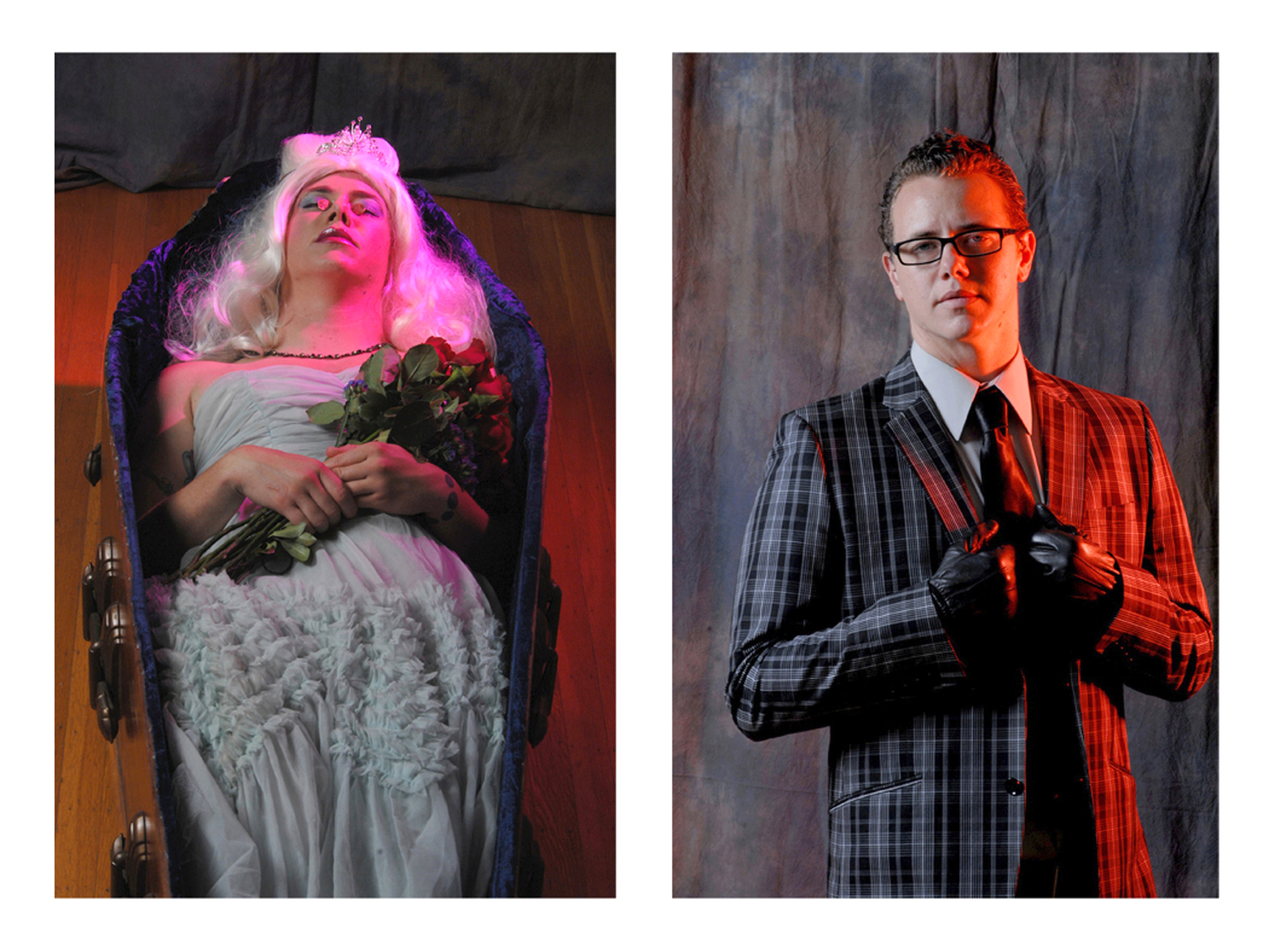A photo depicts a young woman lying in a coffin, wearing a white dress and a tiara, and holding a bouquet of roses. In the next photo, a man wearing a well-cut suit, tie and a pair of gloves, stares into the camera. They are the same person. He has put to rest the female sex he was born with and fully embraced the male gender he belongs to.
Today, Gamma Rho Lambda, a lesbian, gay, bisexual, transsexual, queer, questioning, intersex, asexual and ally social sorority, will hold “Transgender Day of Remembrance Art Display” to honor the transgender community and those who have died as a result of violence and prejudice against the transgender community. “Transgender” refers to those who identify themselves as a gender different from the sex they were assigned at birth.
Social convention, which sees gender as a binary of masculinity and femininity, does not capture the whole range of gender identities that those in the transgender community may have. The transgender community includes those who identify with both genders or with neither gender, as well as those who identify as the sex opposite from the one they were born as.
Many still associate being transgender with sickness or a disorder, said Kimberly Lau, a second-year biochemistry and communications student who created the idea of a gender art exhibition and is also in charge of organizing and collecting artwork.
“(The art gallery) is taking a different approach from a lecture. (It’s) something people are excited to see, where people can come up and interact,” said Shannon Flint, a fourth-year English student who is in charge of the logistics of the event.
Various photos and paintings from UCLA students and other professional artists and photographers will be featured in the gallery. Photographer Leon Mostovoy and the Original Plumbing magazine sent in photos as well. The Original Plumbing magazine details the lifestyles of transmen, or people who are born female but identify as and transition into being male. The magazine explores what it means to be transmen and how everyone has a different relationship with his or her body. Definitions and explanations will be staggered across a board, and resources will be readily available for people to contact if they have any questions.
Many of the photos show transgender individuals holding signs. There are various messages, from a white individual with short, dark hair wearing a beanie and androgynous attire holding a sign that says “this is what a real woman looks like,” to a mournful Asian with long hair holding a sign that reads “I just want to die.” Some of Mostovoy’s photos are from the “Death of My Daughter” series, in which individuals discard their female personas and become the man they felt they always were.
“The photos are supposed to surround gender nonconformity. … They are supposed to shock and surprise and intrigue you,” Lau said.
In addition to the art, there will be an interactive segment at the end of the gallery called “Gender Bread.” A diagram looking like a gingerbread man will have a symbol over its genitals and its brain, representing sex and identity. It will be up to the students to determine where they identify on the gender spectrum. People will be given stickers to stick on a spectrum based on where they think they fall between the very masculine and feminine sides, which will show the range of genders on campus.
“The gender bread is a continuum. People place themselves where they think they lie … It’s not mutually exclusive,” said Flint. “(I want) people to question their own identities, if they’re (of the) more traditional gender, or less traditional and identify as transgender.”
The point of the art gallery is to reveal the challenges and discriminations that the transgender community faces. The exhibition will also demonstrate how people use labels on a daily basis. The goal is to help people re-evaluate society’s pre-existing notions of gender. Lau said she hopes the exhibition will help the campus grow to be more accepting of the transgender community.
“I hope that people come away from this event with a greater understanding of the (transgender) community and a greater understanding of gender identity … and how it plays out in everyday life,” said Emily Kunstler, a fourth-year gender studies student in charge of funding for the exhibition.
Flint said Gamma Rho Lambda Sorority is taking an activist stance by organizing this art show. They are speaking out for those who are voiceless and have suffered from discrimination.
“Transgender is the last frontier of activism, the last barrier. The (transgender) movement hasn’t gotten as big (as lesbian, gay and bisexual movements) yet,” Lau said. “We’re just hoping to have our campus be more aware of it.”
